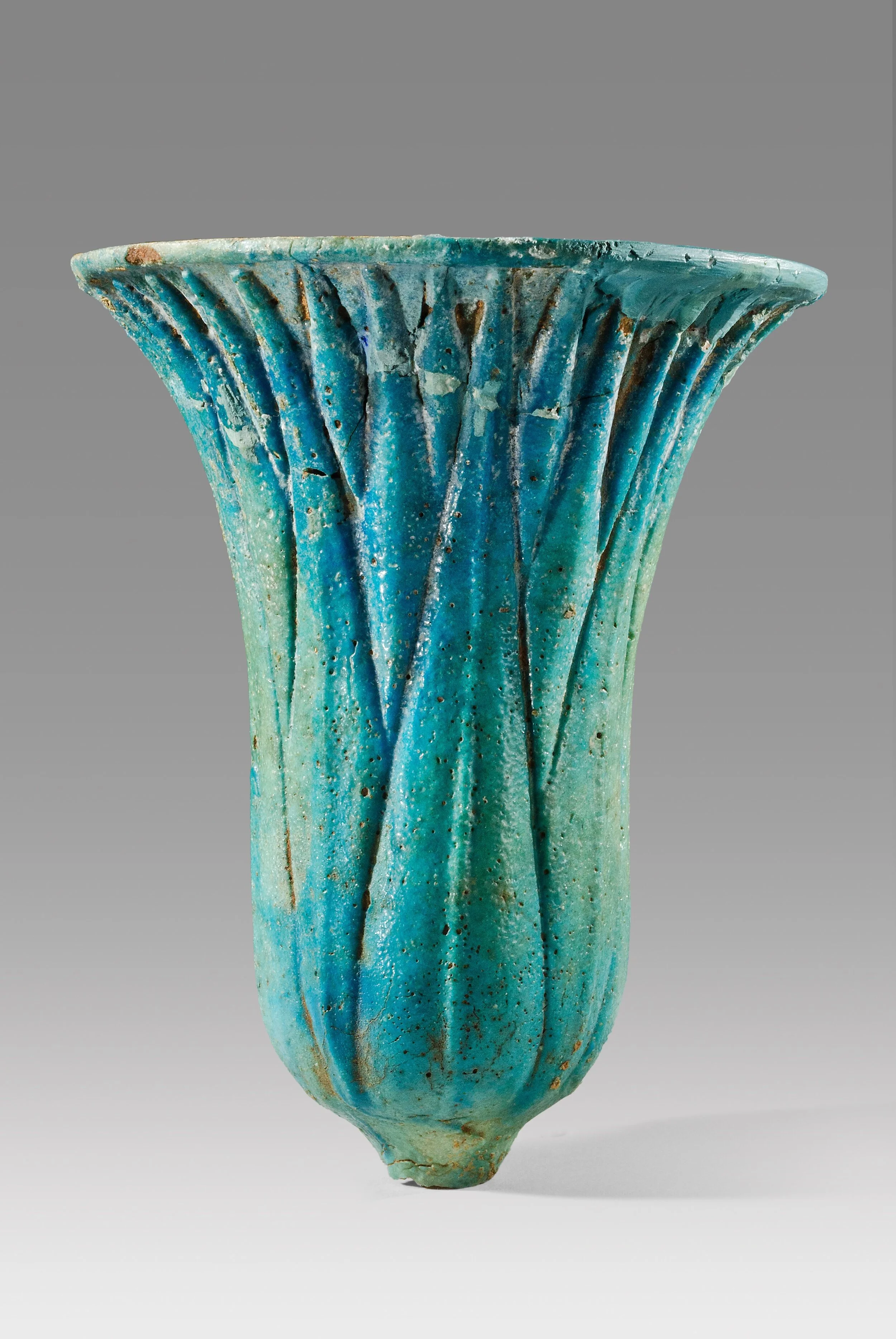Ancient Egyptian Faience Lotus Cup




Ancient Egyptian Faience Lotus Cup
Egyptian, New Kingdom, ca. 1552 - 1069 B.C.
Faience
H: 13 cm (5.1 in)
Serial: 28156
Provenance
Ex- American private collection, acquired in Egypt in the beginning of the 20th century.
Exhibited
Museum of Man, San Diego, California, 1968
Simple and elegant in form, the recipient is shaped as a lotus flower, still half-closed, whose corolla and sepals are modeled in relief. Lotus-shaped faience chalices appeared during the 18th Dynasty and remained popular until the early 1st millennium, during the 22nd Dynasty. They are generally blue in color; some are decorated with narrative scenes in relief; some have only pictorial treatment by black color, although there are known a few examples painted in polychromatic faience. Some examples of particularly high quality have square, rather than circular mouths.
There are two recognized typological groups: a long and slender chalice shape, and a broad and rounded shape, most likely representing the two varieties of lotus that existed in ancient Egypt. In addition to faience, other materials such as stone, glass and precious metals were used to manufacture this type of vessel. As with other works made of noble materials, faience lotus-chalices were certainly intended for the wealthiest classes. The precise use of these vessels remains unknown. However, the lotus is symbolically connected to birth and rebirth and was, most likely, used for ritual and votive purposes during religious festivals, in funerary proceedings, or simply as drinking goblets.







